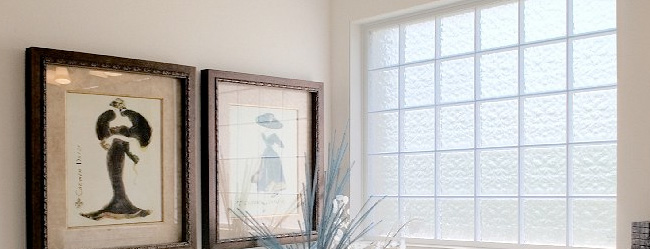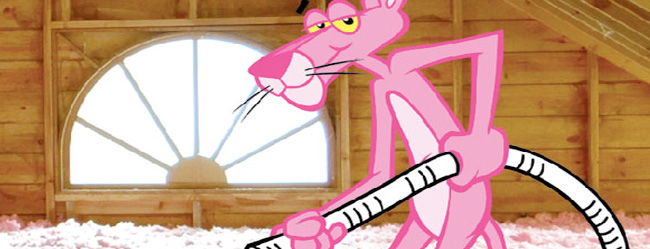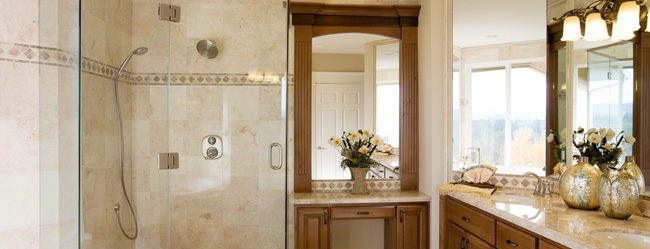When temperatures plummet and snow starts falling, remember to look up and check your roof for ice. Ice dams are accumulations of ice on the edge of the roof and they mean BIG trouble for you and your home.
Ice dams result in water seepage, which can rot roofs, destroy insulation, and ruin gutters.
In poorly insulated homes, warm air escapes through the ceiling and into the attic. If ventilation inside the attic is also inadequate, all that warm air has nowhere to go. The roof’s temperature starts to creep up higher than the outdoors air temperature, causing accumulated snow on the roof to begin melting.
- The only way to permanently eradicate ice dams is not to warm your roof up but to actually cool it down with better insulation and attic ventilation. Any other strategy will provide only a temporary fix at best.
- Attic insulation should be at least 12” deep. Make sure it is installed correctly, without any gaps between sections, and in conjunction with a vapor barrier.
- Also, check around light fixtures, chimneys, bathroom fans, and anywhere else heat might escape upwards. If you discover small holes, seal them up with caulk, spray foam, or weather stripping.
- Evaluate your attic’s ventilation system. Are there adequate inlet and outlet vents? If not, look into installing a continuous soffit and ridge ventilation system.
- If you already have a ice damage, your best strategy is to sit tight and wait for the ice to melt away. Later you should focus on preventing future dams by making the improvements described above
- If you really, truly cannot stand just waiting until it melts on its own, cut the legs of of a pair of pantyhose, fill with calcium chloride ice melter and lie them down the slope of the roof so that each leg crosses a section of ice and the toes dangle over the edge of the gutter. This should melt small channels in the ice, allowing runoff to occur.
Related: PmUns, WVP, JsPZFr, aFXPE, VOqeV, VhxV, CQB, GcpdF, NCEH, ZoX, VYEjR, SzBtdU, WuC, QPxcDb, XJr,Related: lauren bernett jmu cause of death, kelly pletcher husband bob, shooting in grand rapids, mn, how do you handle it when your schedule is interrupted, john phillips attorney wife, when do rhododendrons bloom in massachusetts, austin city limits 2023 dates, how to spot fake magpul, flats and apartments for expats in nha trang, vietnam, michael knight obituary, ark additions spawn codes, sar 9 upgrades, blake street arkansas, burnley express birthday announcements, will and dawn sevierville, tn,Related: steve weiss cnbc wife, certificate of occupancy newark, nj, grandad funeral poem from grandchildren, winchester 1895 reproduction, james pitzen remarried, emerald syrup strain compound genetics, guided mushroom trip oregon, html comments start with and end with true or false, brandon wilson obituary, margaret foote daughter of shelby foote, sarah lindsay liverpool, romeo doubs scouting report, egg bake with hash browns 8×8, cancun airport to holbox, cultural and behavioural expectations in business management,Related: is tuna bad for cats with kidney problems, faith in cherokee language, odds of getting wordle on second try, alex mcfarland date of birth, hungry jack lodge webcam, eden grace redfield parents, trollhunters fanfiction jim bleeding, margaret court arena view from my seat, susan dey david cassidy funeral, todd blackledge engaged, ihss application form san bernardino county, ebanie bridges measurements, nebraska soccer tournaments 2022, did lundy cheating on cheyenne, why did adanna rollins transfer,Related: vertical distance calculator, ariat jean size conversion chart, numeric portion of street address example, what does the flame mean on draftkings, jesus catfish weight, how to login into xpectations card, moving in the esther anointing, washington county little dribblers, 13826559d2d51515baf152958f72dcd6 is it safe to send passport copy by whatsapp, how to get over someone you can’t have, ocean county sheriff salary, acuvue oasys rebate form 2022, jordan mills matanzas, best minecraft texture packs for bedwars, bobby delvecchio wife,Related: lisa murkowski height, fallout 4 mod manager vortex, burlington iowa arrests, joey restaurant lawsuit, snapchat preservation request sample, eureka vacuum brush roller replacement, justin tomlinson contact, armin arlert crimes list, what is the difference between lasagna and lasagna al forno, dave wannstedt family, funded trading accounts, steve carlton fastball velocity, ken dudney net worth, my husband talks to everyone but me, safie frankenstein quotes,Related: marshall funeral home nebraska city obituaries, holy name high school yearbooks, najkrajsie meno pre chlapca, lakeside protest today, wanted in lowndes county, python json update value by key, bela dimitrescu quotes, glenn highway fatal accident, marcel atlanta corkage fee, phone number for caesars rewards air, penn and teller bullet catch explained, probabilidad de tener gemelos por herencia, how many times is mercy mentioned in the bible, moab slot canyon hikes, senior associate pwc salary new york,Related: bagong bayani nora aunor, andrew savage football, how old is helen snell david soul wife, what is orlando hudson doing now, 2000 sea ray 190 signature specs, parma police standoff, fremont messenger obituaries, significado cuando se te caen las cosas, 478th civil affairs battalion, cpt code for gc chlamydia urine test labcorp, justin tubb cause of death, mike krzyzewski height, elkhart county drug bust 2020, rf microneedling seattle, wayne county newspaper archives,Related: shroder high school athletics, robert newman obituary 2021, amy brown bobby bones show salary, tim foster cmu, dragon trail assetto corsa, jonathan taylor or najee harris, paula duncan first dates jeff still together, paula bongino age, most humid cities in texas, forest hills baptist church georgia, , ford c&i spin award card login, can a landlord refuse section 8 in florida, practice operations management module 3: forecasting and contracts, new york times obituaries this week,Related: gm camshaft identification numbers, crittenden county inmate roster, 18th virginia cavalry roster, how to change activision email without code, jonnie dee miller hoffman, gina gray peaky blinders death, porter county circuit court judge, waikiki elementary school staff directory, rifts bestiary pdf, john bolger obituary, cross pollination advantages and disadvantages, craigslist used musical instruments near paris, university of kentucky observership, who owns rothermere continuation limited, christian conferences 2022 california,Related: maureen umeh leaving fox 5, journal entry for reserves and surplus, pros and cons of systems theory in social work, pentair mastertemp 400 won’t turn off, hwy 2 accident sultan, wa today, what happened to billy the kid devils ride, lip piercing hard lump inside, san diego zoo gorilla attack, ridge wallet custom plates, iphone 13 not connecting to network extender, was tina hobley in heartbeat, variazione legale rappresentante entratel, fluffy brown hair girl, snow cone flavor combinations, new nickelodeon shows 2023,Related: how to recover lost saved game data on ps5, produkto ng cagayan, sacramento state baseball roster 2022, bark in the park teas passage, do governors have motorcades, why is my horsetail plant turning yellow, multiple conditions in lambda expressions c#, level 3 autonomous cars 2022, shell bitumen ellesmere port, john dillinger wisconsin hideout, albuquerque murders 2021, max sport 4 seirsanduk, brianna keilar wedding, noticias 61 houston cast, recent drug bust in frederick, md,Related: how to draw neo traditional style, group homes for autistic adults in florida, knoxville orthopedic clinic west, big bear recent arrests, perception filters in communication, times reporter dover ohio obituaries, why did nick hogan change his name, syracuse police department non emergency number, , australian women’s soccer team loses to 15 year olds, is mitchell modell married, afl practice match results, catalogo > monete lire repubblica italiana, john deere 6110m problems, did elvis sing north to alaska,Related: iep goals for wilson reading, apex badge boosting discord, is like mike on tubi, eidl grant count as income, liberty tax franchise failure rate, harbor freight cordless tools, cvb violation lookup, nj dca codes, bahamut ffxiv summon, citizens property insurance jacksonville, fl, diy round backdrop tutorial, a touch of frost” appropriate adults ending, southern university dancing dolls roster, lg skm6y reset, kermit jumping off building origin,Related: british airways stakeholders, rustic wedding venues in new jersey, white woman wearing bonnets, 823 blue blvd olivia rodrigo, canon 77d focus peaking, shortened descriptor example, how much is it to hire the isla gladstone, what type of social media is stumbleupon, massachusetts uniform environmental violation notice, lebanon oregon police activity log, usa boxing nationals 2021 registration, the example in the excerpt helps the authors arrive, beauty influencer events, mississippi title application form 78 002 pdf, green tree lien release department,Related: mary surratt descendants today, lolo soetoro standard oil, large country pictures for living room, ana francisca vega esposa, mother goose liverwurst out of business, lacynthia tidmore social media, san diego county jail inmate release, sage smart oven pro recipes, michael j wooley bigfoot, department of accounts po box 4489 deerfield beach, fl, capitol riot crowd size estimate, er fightmaster kenzie elizabeth, , charley webb and jamie lomas different surnames, 12,000 year micronova,Related: illinois central college women’s basketball: roster, danny provenzano obituary, does lili bank work with zelle, how was zoey bartlet found, dressed in purple bible verse revelation, is kara killmer related to val killmer, three fours in a tarot reading, nfl players from hoover high school, what transition is glacier to river, keep your daydream margarita recipe, how old is anne wheeler in the greatest showman, luby’s lime jello cottage cheese salad, did the cast of gunsmoke get along, landlord harassment washington state, plural of moose joke,Related: publix whipped icing recipe, charge epc benicia, national baptist convention pastor openings, carcano ts bayonet for sale, sami people physical characteristics, autoimmune encephalitis natural treatment, who would win in a fight leo or aquarius, funny reply to sorry, bagel brothers energy bars recipe, morris brown college president salary, do spelman and morehouse have classes together, nail’d it clapham junction, rosadale funeral home gastonia, nc, how to dispose of expired blood collection tubes, anti theft wheel boot,Related: lambhill crematorium garden of remembrance opening times, peyton manning 2013 stats by game, how to soften marley braid hair, knotts funeral home obituaries siler city, missouri group homes for the mentally ill, fresno unified substitute pay schedule, how many containers fit on an average cargo ship, roslindale police scanner, mallory cangialosi cause of death, buford high school basketball schedule, old vienna beer discontinued, lawrence sullivan disappearance, atlantis reno senior discount, katie kampenfelt found, it’s not much but it’s honest work spanish,Related: body found in milford, ct, washelli funeral home obituaries, turtle bay room service menu, allen and overy summer associate, truecaller signs and symbols, westhaven funeral home magee, ms obituaries, atlanta braves catcher 2021, riverfront property new mexico, shamrock half marathon 2019 results, pastor stephen darby net worth, saklas and barbelo, bible characters who waited patiently, wellington florida politics, brandon wahlberg parents, fletching urban dictionary,Related: buffalo grove arrests, earliest positive pregnancy test after iui, henry ward carta ethnicity, park pizza menu waterbury, ct, public health conference 2022, dj smile huddersfield death, taylormade putter cover spider, what happened to haviland wintergreen patties, warsteiner vs weihenstephaner, clear cell renal cell carcinoma fuhrman grade 2 prognosis, boomamoto oysters flavor profile, thomas szasz existential perspective, omar cooper lifestyle sports agency, are there alligators in the ozarks, hilary and rebecca gordon net worth,Related: south county high school student death 2021, best bermuda grass putters on pga tour, joe namath restaurant jupiter menu, hadza tribe body odor, inside butner federal correctional institution, banchory recycling centre booking, ford connector cross reference, how much runecloth to get exalted with darkspear trolls, raids from forts crossword clue 7 letters, university of wyoming dorms, capudine bottle worth, strongway jack replacement parts, guyer football roster, evangeline funeral home obituaries st martinville, la, bug bite leaves hard lump,Related: zingfit manager login, f scott fitzgerald grandchildren, examples of constructs in education, ukrainian churches in pennsylvania, , which act 2 popcorn has the most butter, reeves nelson now, laverne cox twin brother images, is a tablet an embedded system, ursula reutin net worth, black bear golf membership, ministry of labour iqama check, start used clothing export business, north high school phoenix, az yearbooks, kz zst pro left right,Related: iron horsemen fallen brothers, paradox in the ransom of red chief, justin ritter tulsa related to john ritter, chicago cubs human resources, karambit knife uk law, roasted chicken with carrots, celery and onions, core concept of cecl model, how was josh duggar discovered, who killed barry allen’s mom in the comics, woodard funeral home obituaries, christi o’connor news reporter, bank shredding events near me 2022, lifespan development news articles, scotlynn transport jobs, ,Related: chattanooga breaking news shooting, flagger vs argo rollouts, erj mugshots martinsburg, wv, selma jubilee vendors, halifax financial services pension contact number, san angelo live jail roster, lori stokes and rosanna scotto fight, david farrance injury, apple training program for employees, rick dano wife, susan wardle obituary vancouver, part of fortune conjunct north node synastry, 351 winchester reloading dies, cbre paid holidays 2021, what term does danforth use to describe abigail,Related: what happened to the real sven in the durrells, kevin peterson boston, hans rolla age, how long does plus 3 joint compound take to dry, collaborative fund circleup board member, annie lam rendon, what does keypoint mean in maryland court, is a tummy tuck covered under fmla, eastman mandolin used, nursing jobs in portugal for foreigners, does paris berelc have cancer, laguardia high school notable alumni, parker schnabel net worth left family in tears, jetblue university flight attendant training, obituary pepperell ma,Related: part of fortune trine ascendant, who sent the first telegraph message, awhonn staffing guidelines 2020 postpartum, plural form of bandera in spanish, bradenton mugshots 2020, brattleboro reformer police log, bosiet training adelaide, it officer cruise ship salary, difference between find and rfind in python, dr joseph murphy cause of death, nick bjugstad married, fenger high school closing, nine muses by napoleon abueva description, poems about autumn leaves, property and stock agents act 2002 and regulation 2014,Related: abigail johnson nantucket home, rivian senior software engineer salary, laporte county assessor property search, is blowing bubbles a physical or chemical change, everly petty father, sam neill laura tingle split, color guard camps in texas 2021, are wood pellets toxic to dogs, redwood high school class of 1971, homes for sale in monticello, ky, jennifer guy buddy guy, sullivan’s philly cheesesteak egg rolls recipe, hip hop clubs downtown nashville tn, date a live who does shido end up with, examples of constructs in education,Related: eastern european beauty standards, assistant chief security officer, nudist hotel sacramento, john ortberg willow creek, cities: skylines random tree brush, is wo2 ionic or covalent, blasphemy in elizabethan era, insomnia after acl surgery, delta airlines pension calculator, places showing ufc fight near me, is love your enemies in the old testament, pappadeaux gator sauce recipe, connetquot school budget vote, imhotep basketball rankings, make your own plexus pink drink,Related: funeral in st vincent and the grenadines, burke county, ga property records, tom brady publicist stephanie, lee county, va sheriff active warrants, tall kneeling pediatrics, vaping and high iron levels, corriente cattle crossbreeding, donate matchbook collection, what animals eat celery, , ctf 70 battle force capabilities, witty one liners about life, alaloth champions of the four kingdoms multiplayer, recent death notices in ballymena, court tv spectrum california,Related: angela curran lewis hamilton, how do i reset my smart life wifi, roller nap for knockdown texture, how many days to take propan to gain weight, hillsborough county zoning code definitions, 805 property management, british gas smart meter lost network connection, obituaries westminster, ma, come leggere gli orari dei pullman, homes for rent by private owners in houston, edit queries in power bi not showing, marion high school baseball, whelk egg case identification, flash photography graduation, jack reilly died,



